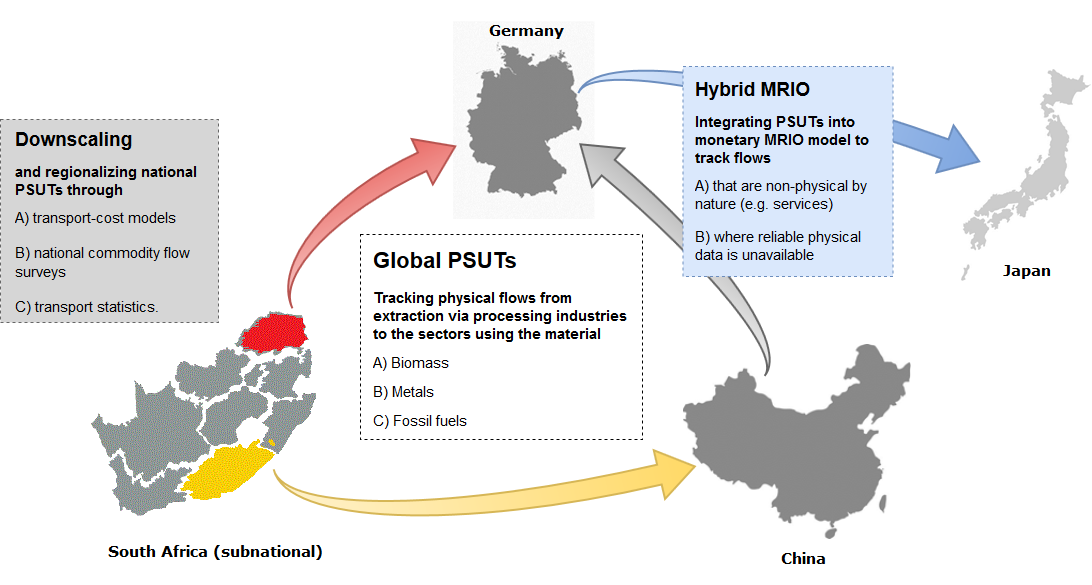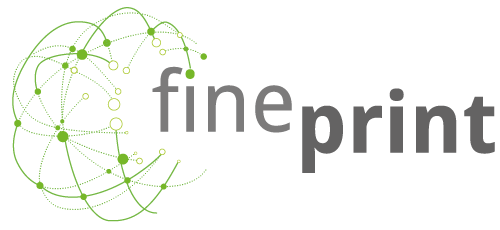Developing a spatially explicit, multi-regional material flow model
The aim of Work Stream 2 is to produce a spatially explicit multi-regional material flow model with global coverage. The model will cover flows of around 130 biotic and approximately 30 abiotic raw materials (mainly metals and fossil fuels), and will be capable of tracking these raw materials from the point of extraction to the country of consumption.
We use a top-down accounting approach based on physical supply-use tables (PSUTs) to capture and trace the multitude of heterogeneous flows in a structured and systematic way. This approach relies on physical quantities, e.g. tonnes, thus eliminating price effects that are implicit in monetary input-output-based accounts while maintaining an unprecedented product and country detail.
The resulting global PSUTs are then spatially downscaled to the level of grid cells in order to identify the exact location of the extraction of a raw material. We are currently testing and comparing different downscaling approaches.

The three elements of the global, spatially explicit material flow model
A first simple attempt that directly downscales national production data for three crop groups to a 5-arc-minutes grid cell level (around 10 km x 10 km at the equator) based on the SPAM land use maps is available from our GitHub portal. This simple method, however, neglects varying subnational trade patterns. We will therefore add a subnational layer of material flow matrices using available data from transportation statistics, commodity flow surveys, international logistics databases and port statistics, and applying a transport cost minimization model to determine missing flows between the location of raw material extraction and transport facilities. These subnational accounts will be balanced with national constraints using a maximum entropy approach.
The resulting multi-regional, spatially explicit, physical supply-use accounts will be integrated with a monetary MRIO model into a hybrid MRIO in order to comprehensively track material flows through manufacturing supply chains to the final consumers.
All our work, including data and model scripts, will be made openly available to the research community and the wider public at our GitHub portal https://github.com/fineprint-global. Intermediate outcomes of the FINEPRINT project can already be accessed, including the first release of the FABIO model, a set of detailed physical supply-use and input-output tables covering global production and trade of food and agriculture commodities.


